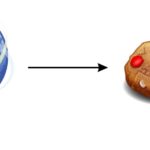Processed Meat
Processed meats can wreak havoc on your health and contribute to belly fat due to their high fat and sodium content. The nitrites and nitrates used in processing cause inflammation, a key driver of fat storage and chronic disease.

Some of the worst foods that can hinder your ideal summer body
Pastries
Pastries and baked goods contain ingredients detrimental to health, leading to spikes in blood sugar and insulin, which contribute to increased fat storage, especially around the midsection. Additionally, the high levels of sugar and trans fats in pastries increase the risk of type 2 diabetes and heart disease.
Ice Cream
Ice cream is calorically dense and often loaded with added sugars, which can lead to weight gain. It also typically contains unhealthy fats. Many ice cream flavors are packed with empty calories from syrups and other flavorings. This means it’s best to find healthier alternatives to satisfy your sweet tooth.
Cookies
Cookies are one of the worst offenders when it comes to weight gain, causing spikes in blood sugar and leading to belly fat storage. Like potato chips (and most snacks), this treat tends to be low in fiber.

Cookies are one of the worst offenders when it comes to weight gain
White Bread
White bread is another processed food that experts advise against consuming if you want to reduce belly fat. This type of bread is loaded with refined carbs, which can be harmful to your body and lead to weight gain over time.
Fried Foods
Fried foods create unhealthy trans fats and increase caloric density, leading to fat storage, especially around the waist. Trans fats raise bad cholesterol while lowering good cholesterol, resulting in heart disease and stroke. Additionally, the high sodium content in fried foods can lead to a host of health issues, including age-related diseases.
Potato Chips
Some potato chips are fried in unhealthy oils and loaded with salt, making them calorie-dense and high in unhealthy fats. In reality, while this snack will add a lot of calories to your diet, it offers little to no nutritional value. They contain little to no fiber, which could help you feel fuller and prevent overeating.
Cookies: Uses, Management and Deletion in Chrome’>Understanding Cookies: Uses, Management and Deletion in Chrome
Identifying the Differences between Bleached and Unbleached Flour
This article will take a closer look at the distinguishing features between bleached and unbleached flour. We will examine the advantages and disadvantages of both, so that you can better understand how each type of flour affects baking recipes. Read on to discover more about the unique properties of bleached and unbleached flour!







































